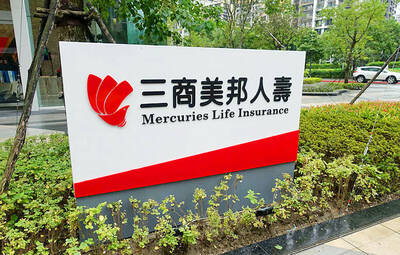Exports could post a year-on-year decline for the first half of the year because of the higher comparison basis recorded last year and lower demand from major export markets in the wake of a fragile global economy, the Ministry of Finance said yesterday.
Outbound shipments totaled US$25.54 billion last month, down 6.4 percent year-on-year and 3 percent from last month, the ministry said in a report.
Exports to China and Hong Kong contracted 11.6 percent year-on-year to US$9.86 billion following slower economic activity, with exports of machines, metals, plastics and chemicals declining for a second consecutive month, the report said.
Meanwhile, exports to the US fell 16.3 percent from the previous year to US$27.06 billion as a result of lower exports of information and communication technology, products, while outbound shipments to Japan were down 10.6 percent at US$1.46 billion, ministry data showed.
However, exports to Europe and the six main ASEAN members both rebounded last month, with annual growth standing at 3.5 percent and 4.4 percent respectively.
Nine of the nation’s 10 major export sectors posted year-on-year declines last month, while exports of transportation equipment rose 17.9 percent to US$1.01 billion from a year ago, its highest ever level, data showed.
Donna Kwok (郭浩庄), an economist for Greater China at HSBC Asia, said in a note yesterday that she expected demand from the West, especially Europe, to constrain export growth for a while longer.
Meanwhile, the steady economic slowdown from the gradual impact of global energy price increases in the first quarter of this year could encourage the central bank to keep interest rates unchanged at least until the fourth quarter, Kwok said.
For the first four months of this year exports totaled US$96.37 billion, down 4.7 percent from a year earlier, the worst performance among the four Asian Tigers, ministry statistics showed.
“Although the global economy has shown signs of improvement, the competition between countries has also been tougher, making it harder for some exports from Taiwan,” Lin said.
Exports to South Korea inched up 0.9 percent year-on-year in the first four months, with growth in exports to Singapore and Hong Kong standing at 6.2 percent and minus 0.3 percent respectively in the first three months, according to ministry statistics.
The nation’s imports, or inbound shipments, totaled US$24.86 billion last month, up 3 percent year-on-year and 3.6 percent from last month, spearheaded by higher prices for imported crude petroleum, the ministry said.
As a result of falling exports and rising imports, the trade surplus fell to US$690 million, down 76.6 percent year-on-year and 70.8 percent from the previous month, the data showed.
However, imports of capital equipment fell 1.4 percent from a year ago to US$3.1 billion last month, with machine imports posting its 10th consecutive monthly fall, indicating continued weakness in private investment.

France cannot afford to ignore the third credit-rating reduction in less than a year, French Minister of Finance Roland Lescure said. “Three agencies have downgraded us and we can’t ignore this cloud,” he told Franceinfo on Saturday, speaking just hours after S&P lowered his country’s credit rating to “A+” from “AA-” in an unscheduled move. “Fundamentally, it’s an additional cloud to a weather forecast that was already pretty gray. It’s a call for lucidity and responsibility,” he said, adding that this is “a call to be serious.” The credit assessor’s move means France has lost its double-A rating at two of the

AI BOOST: Although Taiwan’s reliance on Chinese rare earth elements is limited, it could face indirect impacts from supply issues and price volatility, an economist said DBS Bank Ltd (星展銀行) has sharply raised its forecast for Taiwan’s economic growth this year to 5.6 percent, citing stronger-than-expected exports and investment linked to artificial intelligence (AI), as it said that the current momentum could peak soon. The acceleration of the global AI race has fueled a surge in Taiwan’s AI-related capital spending and exports of information and communications technology (ICT) products, which have been key drivers of growth this year. “We have revised our GDP forecast for Taiwan upward to 5.6 percent from 4 percent, an upgrade that mainly reflects stronger-than-expected AI-related exports and investment in the third

Mercuries Life Insurance Co (三商美邦人壽) shares surged to a seven-month high this week after local media reported that E.Sun Financial Holding Co (玉山金控) had outbid CTBC Financial Holding Co (中信金控) in the financially strained insurer’s ongoing sale process. Shares of the mid-sized life insurer climbed 5.8 percent this week to NT$6.72, extending a nearly 18 percent rally over the past month, as investors bet on the likelihood of an impending takeover. The final round of bidding closed on Thursday, marking a critical step in the 32-year-old insurer’s search for a buyer after years of struggling to meet capital adequacy requirements. Local media reports

RARE EARTHS: The call between the US Treasury Secretary and his Chinese counterpart came as Washington sought to rally G7 partners in response to China’s export controls China and the US on Saturday agreed to conduct another round of trade negotiations in the coming week, as the world’s two biggest economies seek to avoid another damaging tit-for-tat tariff battle. Beijing last week announced sweeping controls on the critical rare earths industry, prompting US President Donald Trump to threaten 100 percent tariffs on imports from China in retaliation. Trump had also threatened to cancel his expected meeting with Chinese President Xi Jinping (習近平) in South Korea later this month on the sidelines of the APEC summit. In the latest indication of efforts to resolve their dispute, Chinese state media reported that